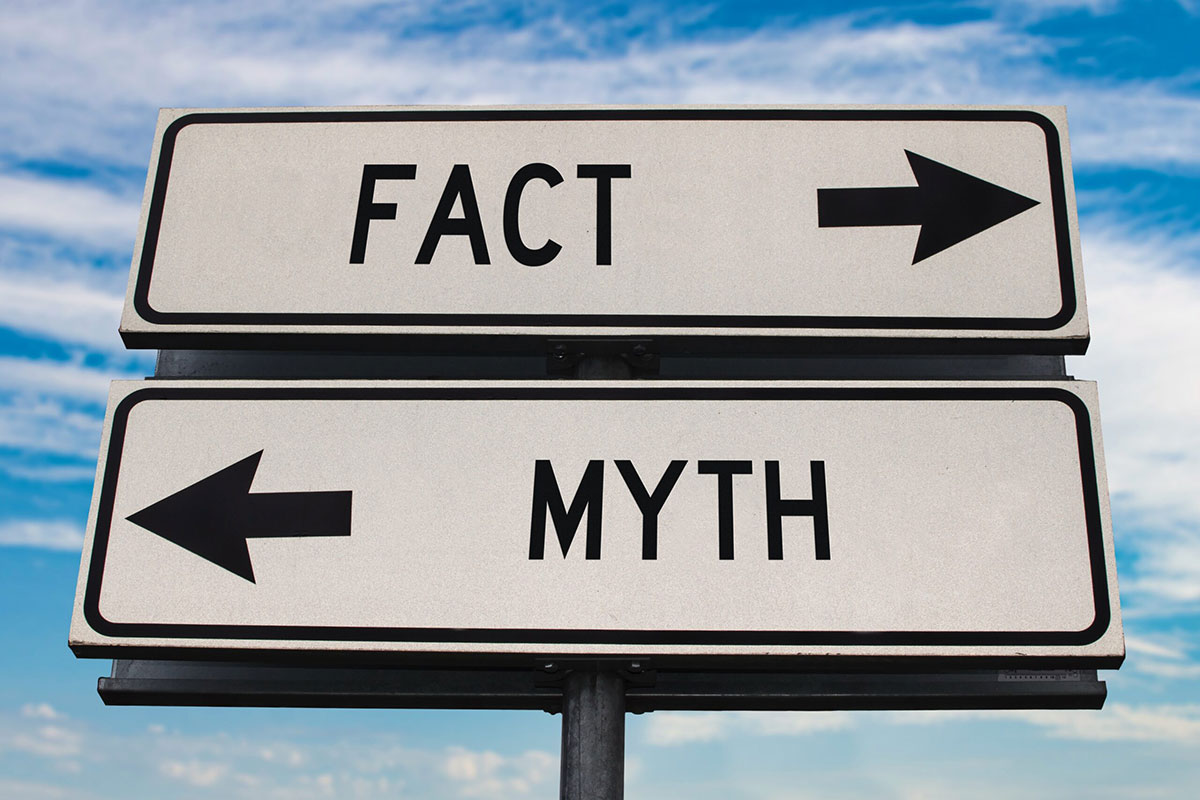Porn does Not Equal Sex Trafficking
January 31, 2024
Adult industry work (especially pornography) is widely misunderstood among the general public, even though pornography is consumed by an estimated 91.5% of men and 60.2% of women per year1 across the US.
Antiporn activists frequently equate sex work with sex trafficking to justify a their calls for abolition, prosecution and censorship. However, sex trafficking has a clear definition: any form of commercial sex that involves force, fraud or coercion. Many faith-based antiporn groups rebranded as “anti-trafficking” groups in the past decade, in hopes of using concerns about trafficking as a way to disguise old morals-based censorship campaigns.2
Pornography is a legal form of sex work in the US (the exchange of sexual and erotic services such as escorting, stripping, phone sex, etc.) encompassing a wide range of performance and art types used for sexual stimulation. As a legal industry, pornography is regulated by labor laws, federal age verification statutes, and is subject to some specific adult entertainment industry standards (such as the 2257 regulations, which require producers of sexually explicit material to obtain proof of age for every model they shoot, and retain those records).3 Though not all sex work is legal, porn production, performing, and viewing are all legal and accessible to most Americans over the age of 18.
We are at a time in history where porn is at its all-time most accessible, affordable, and available,4 which has the media and legislators asking about the links between pornography and sex trafficking. Though credible research is limited in this area, the following discourse offers a review of existing literature to debunk anti-porn absolutist claims about the adult industry and trafficking.
“According to cases reported to the National Human Trafficking Hotline in 2020, pornography moved to the number one venue of where [sex] trafficking cases were reported within the United States.” — Fight The New Drug
Myth 1: Is sex trafficking very common in the porn industry?
No. Incidences of sex trafficking linked to the legal adult industry are incredibly rare. While a few cases over decades have led to high-profile headlines, they are anomalies denounced by workers, platforms and production companies. Millions of people currently perform or create content in the adult industry (at least three million on OnlyFans alone),5 with thousands of scenes and clips produced every week. Despite the hyperbole from activists opposed to sex work, there’s little actual data to support that trafficking is a regular, let alone essential, feature of adult content creation.
Critics often cite calls to the US National Trafficking Hotline to argue that hundreds of cases tied to pornography are reported each year. However, those hotline calls do not necessarily represent actual cases, only that someone — often an unrelated third-party — has seen something they feel indicates trafficking. Additionally, any sex act involving force, fraud or coercion that is photographed or filmed is categorized as pornography, but that does not mean there is any relationship with legal adult production or platforms.
Many people of all genders choose to work in the adult industry in a variety of ways that are legal, consenting, and informed, including the making of adult visual content.6 While workers in the adult industry are at risk of harm and exploitation just like any other industry, pornography is a legal and frequently accessed mechanism for women and gender expansive people to participate in the economy and earn a living.
Unfortunately, many antiporn activists believe that no one can (or would) willingly consent to sex work and that, as a result, all sex workers are by default “trafficked.” They may argue that true consent can not exist when money is a factor, yet fail to extend that analysis to any other form of labor besides sex work — despite the fact that a paycheck is a component of nearly every form of labor (no one argues that being paid to work at Macy’s is labor trafficking). While major anti-trafficking groups have recently clarified that sex work and sex trafficking are different and that sex work can be done consensually, many others still refuse to acknowledge a difference.
The availability and accessibility of porn in the current day is partially attributed to changes in the industry; fan sites such as OnlyFans have popularized the content-creator model that allows individuals to make money on their own rather than relying on a production studio. There is often a worry that this might enable traffickers to force women into prostitution or other sexual acts against their will, but there are almost no evidence to suggest this to be so. There is no existing literature that links pornography as a causation to trafficking.7
Creator content is produced by workers themselves, and requires age-verification, model releases and other forms to establish consent. Further, platforms use human and AI moderation to identify potential issues and often work with law enforcement to identify activity that may be suspicious or illegal. It’s important to note that all force, fraud, and coercion related to porn production, even though it’s a legal industry, is still considered trafficking and is prosecutable by law.
Myth 2: Does pornography fuel sex trafficking?
No. Data is limited, but there are no definitive bodies of research that link exposure to or enjoyment of pornography to increased violence or exploitation in the industry itself. The prevalence of exploitation in porn production is also unknown, but there is no empirical evidence demonstrating that the adult industry is more exploitative than any other industry.
Arguments made in favor of this claim use the following logic: we cannot know who in the adult industry have fully consented to working, therefore we are enabling trafficking by consuming the product. Logically, this is true for every industry where trafficking occurs, such as agriculture and domestic work,8 but no one is rallying against the consumption of bananas just because the people harvesting are at risk of exploitation. That argument fails to stand up to the practicalities of capitalism.
“Cases of cruelty and forced work are clearly wrong and intolerable, but with the proper regulation and oversight, such harms could be prevented (at least in theory); pornography does not require such coercion for its production.” – Amanda Cawston
Policy Suggestions:
Here is how we can prevent labor exploitation in the adult industry:
- Decriminalize and destigmatize all forms of sex work. When sex work is criminalized and stigmatized, it inhibits reporting, as workers may face at risk from law enforcement, financial institutions, employment, school or housing for coming forward.
- Prevent banking discrimination: Mastercard is currently under duress from the ACLU for its discriminatory practices for adult content creators. Workers frequently report unauthorized shutdowns and seizures of bank accounts around the United States, causing undue financial stress and vulnerability to poverty and trafficking.
- Adult content is protected under our First Amendment Rights. Before passing bills, include sex workers and adult industry workers in the conversation about potential impact of legislation– before it is introduced. Do this with all online safety, censorship, and anti-trafficking legislation.
- Prevent discrimination in employment; many sex workers who wish to make career moves are faced with barriers as they navigate the workforce outside of the adult industry.
- Infuse vulnerable communities with resources such as housing, education, and other opportunities so that individuals can make empowered choices about their relationships and their work.
See Also:
Pornhub, Exploitation and the Casualties of an Antiporn Crusade (Jezebel)
How the War on Porn is Endangering US Sex Workers (OpenDemocracy)
The New Campaign for a Sex-Free Internet (Reason)
Preventing Sex Trafficking Requires the Full Decriminalization of Sex Work (Freedom Network)
Sex Work is not Trafficking (NSWP)
1. Solano, Ingrid, Nicholas R. Eaton and K. Daniel O’Leary. “Pornography Consumption, Modality and Function in a Large Internet Sample.” J Sex Res, no. 57 (2020):92-103. doi: 10.1080/00224499.2018.1532488.
2.Weitzer, Ronald. Sex Trafficking and the Sex Industry: The Need for Evidence-Based Theory and Legislation, 101 J. Crim. L. & Criminology1337 (2013). https://scholarlycommons.law.northwestern.edu/jclc/vol101/iss4/4
3. Title 28–Judicial Administration, Part 75. 18 U.S.C. 2257, 2257A. (2005). https://web.archive.org/web/20090516191544/http://ecfr.gpoaccess.gov/cgi/t/text/text-idx?c=ecfr&sid=ba2c31cbb9df51f9aece236b6f827134&rgn=div5&view=text&node=28:2.0.1.1.30&idno=28
4. Ogas, Ogi and Sai Gaddam. “A billion wicked thoughts: What the world’s largest experiment reveals about human desire.” Boston, MA: Dutton, 2011.
5. Spangler, Todd. “OnlyFans Users Spent $5.6 Billion on Porn-Friendly Creator Site in Fiscal 2022, up 16%.” Variety. (2023). https://variety.com/2023/digital/news/onlyfans-creator-earnings-fiscal-year-2022-1235703824/
6.Weitzer, Ronald. Sex Trafficking and the Sex Industry: The Need for Evidence-Based Theory and Legislation, 101 J. Crim. L. & Criminology1337 (2013). https://scholarlycommons.law.northwestern.edu/jclc/vol101/iss4/4
7. Cawston, Amanda. “The feminist case against pornography: a review and re-evaluation” Inquiry, no. 62 (2019): 624-658, DOI: 10.1080/0020174X.2018.1487882
8. International Labour Office (ILO). “Global estimates of modern slavery: Forced labour and forced marriage” Geneva (2017)

Fact versus myth road sign with two arrows on blue sky background. White two street sign with arrows on metal pole. Two way road sign with text. (iPhoto)
